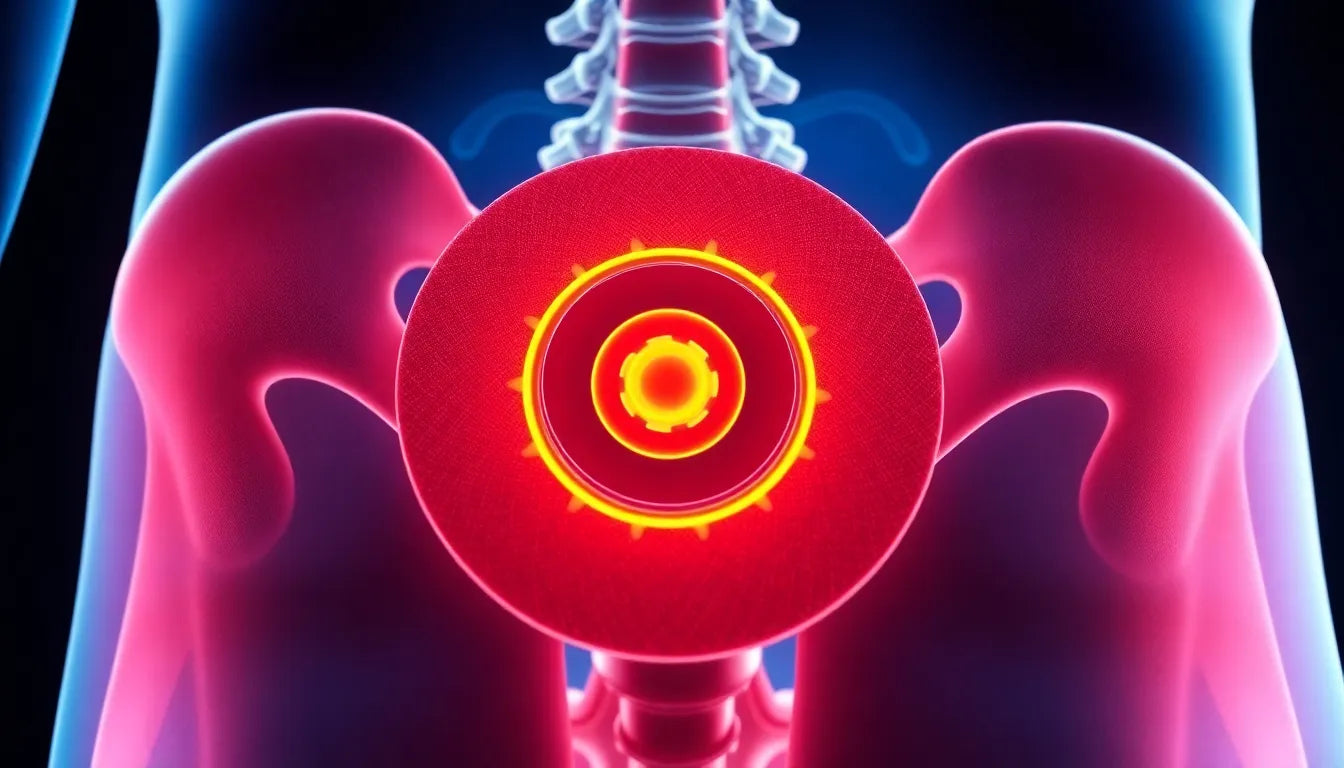Understanding how to approach training after a herniated disc is essential for a safe and effective recovery. A herniated disc occurs when the soft center of a spinal disc pushes through a crack in the tougher exterior casing. This condition can lead to pain, numbness, or weakness in an arm or leg, significantly impacting daily activities and exercise routines. The discomfort often makes it challenging to engage in regular physical activities, emphasizing the need for a carefully tailored exercise plan.
the importance of smart training
Engaging in smart training is crucial for anyone recovering from a herniated disc. Safe and effective exercise plays a vital role in the healing process, as it helps strengthen the muscles that support the spine, improves flexibility, and reduces the risk of further injury. Training smart means understanding your body’s limits, focusing on exercises that promote healing, and avoiding movements that could exacerbate the condition. By doing so, you can facilitate recovery and return to your normal activities more swiftly.
setting the stage for recovery
Recovery from a herniated disc requires a personalized approach to exercise. It is important to recognize that each individual's recovery journey is unique, and what works for one person may not work for another. Consulting with healthcare professionals, such as physical therapists or doctors, is essential in crafting a suitable exercise plan. These experts can provide guidance tailored to your specific needs, ensuring that your training regimen is both safe and effective. By setting the stage for recovery with a customized plan, you can enhance your healing process and reduce the likelihood of future complications.
recommended exercises for recovery
When embarking on a journey of recovery from a herniated disc, incorporating the right exercises into your routine is crucial. Extension-based exercises are particularly beneficial as they help alleviate pressure on the spinal discs, promoting healing and reducing pain. These exercises include:
- Press-ups: This exercise involves lying face down and using your arms to gently press your upper body off the ground, extending the spine. It helps in reducing disc pressure and improving spinal flexibility.
- Cat-cow movements: This involves alternating between arching and rounding your back while on all fours. It aids in enhancing spinal mobility and relieving tension.
- Pelvic tilts: Lying on your back with knees bent, tilt your pelvis by flattening your back against the floor. This strengthens the lower back and improves core stability.
Proper form is essential in these exercises to prevent strain and ensure effectiveness. Always start slowly and gradually increase intensity as your comfort level improves.
core stabilization exercises
A strong core is vital for supporting the spine and preventing further injury. Core stabilization exercises focus on building strength in the muscles surrounding the spine, providing better support and reducing the risk of future herniated discs. Key exercises include:
- Transverse abdominis exercises: These target the deep abdominal muscles, crucial for spinal support. Simple actions like drawing in the belly button towards the spine can activate these muscles.
- Side planks: By holding a plank position on one side, you engage the oblique muscles, enhancing lateral support for the spine.
- Unilateral presses and rows: These exercises involve using one arm at a time, which challenges the core to stabilize the body, thus strengthening it.
Incorporating these exercises into your routine can significantly enhance core strength, providing a solid foundation for recovery.
lower body strengthening
Strengthening the lower body is also essential in the recovery process, as it helps support the spine without exerting undue pressure. Focus on exercises that are gentle on the back, such as:
- Bridges: Lying on your back with knees bent, lift your hips towards the ceiling. This exercise strengthens the glutes and hamstrings, supporting the lower back.
- Nordic hamstring curls: A controlled exercise that targets the hamstrings, providing stability and strength to the lower body.
These exercises help build muscle strength and endurance, contributing to overall spinal health.
exercises to avoid
While certain exercises promote healing, others can exacerbate a herniated disc condition. Flexion-based exercises, which involve bending forward or twisting, should be avoided as they can increase disc pressure and worsen symptoms. These include:
- Twisting exercises: Movements that involve rotating the spine can aggravate the condition.
- Squats and deadlifts: These exercises place significant strain on the lower back and should be approached with caution.
- Overhead weightlifting: Lifting weights above the head can increase spinal compression, potentially leading to further injury.
It's crucial to listen to your body and avoid any movements that cause pain or discomfort. Always seek professional clearance before embarking on any exercise regimen to ensure safety and effectiveness in your recovery journey.
guidelines for safe exercise
Before starting any exercise program post-herniated disc, obtaining clearance from a healthcare professional is essential. They can provide personalized advice tailored to your condition, ensuring you engage in safe and effective exercises. Remember to listen to your body and avoid any movements that induce pain. Gradually increase the intensity of your workouts as you build strength and confidence, and always prioritize proper form to prevent further injury.
Long-term recovery and maintenance
Successfully recovering from a herniated disc involves more than just immediate post-injury care; it requires long-term strategies to maintain spinal health and prevent future injuries. Transitioning back to normal activities should be gradual and mindful, ensuring that you do not rush into movements that could compromise your recovery. Regular physical therapy sessions can play a crucial role in this process, offering ongoing support and adjustments to your exercise regimen as your condition improves.
Maintaining spinal health is essential for preventing future herniated discs. Incorporating a balanced mix of flexibility, strength, and cardiovascular exercises into your routine can help achieve this. Yoga and Pilates, for instance, can improve flexibility and core strength, while low-impact activities like swimming or cycling can enhance cardiovascular fitness without putting undue stress on the spine. Regular check-ins with healthcare providers can help monitor your progress and make necessary adjustments to your exercise plan, ensuring it remains effective and safe.
Personalized exercise plans
One of the most effective ways to ensure a successful recovery from a herniated disc is through personalized exercise plans. These plans take into account your specific condition, fitness level, and recovery goals, providing a tailored approach that maximizes healing and minimizes the risk of re-injury. Working with a physical therapist or a certified personal trainer who understands the intricacies of herniated disc recovery can be invaluable. They can design a program that gradually increases in intensity and complexity, aligning with your recovery progress.
Incorporating both flexibility and strength training into your daily routine is crucial. Flexibility exercises help maintain and improve the range of motion, while strength training focuses on building the muscles that support the spine. This dual approach not only aids in recovery but also fortifies the body against future injuries. It is important to listen to your body and adjust the intensity of exercises as needed, ensuring that you are challenging yourself without risking further injury.
Frequently Asked Questions
Can I lift weights with a herniated disc?
Yes, you can lift weights with a herniated disc, but it is crucial to do so under the guidance of a healthcare professional. Start with lighter weights and focus on form and technique to avoid placing unnecessary strain on your spine. Gradually increase the weight as your strength and confidence improve, and always prioritize exercises that support spinal health.
What exercises should I avoid with a herniated disc?
Exercises that involve spinal flexion or twisting, such as sit-ups, toe touches, and certain yoga poses, should be avoided as they can exacerbate the condition. Additionally, high-impact activities and heavy lifting without proper form can increase the risk of further injury. Always consult with a healthcare provider before engaging in new exercises.
How long does it take to recover from a herniated disc?
The recovery time for a herniated disc can vary widely depending on the severity of the injury and the individual's overall health. Generally, with proper care and a tailored exercise regimen, significant improvement can be seen within a few weeks to a few months. However, complete recovery may take longer, and ongoing maintenance is essential to prevent recurrence.
Is it possible to fully recover from a herniated disc?
While many individuals can achieve full recovery from a herniated disc, it is important to understand that the process requires dedication and adherence to a comprehensive treatment plan. Consistent exercise, lifestyle adjustments, and regular medical check-ups play a critical role in ensuring long-term spinal health and preventing future issues.
How can I prevent future herniated discs?
Preventing future herniated discs involves maintaining a healthy lifestyle that includes regular exercise, a balanced diet, and proper posture. Strengthening core muscles, avoiding prolonged sitting, and using ergonomic furniture can also help protect the spine. Additionally, staying hydrated and managing stress are important factors in maintaining overall spinal health.


















